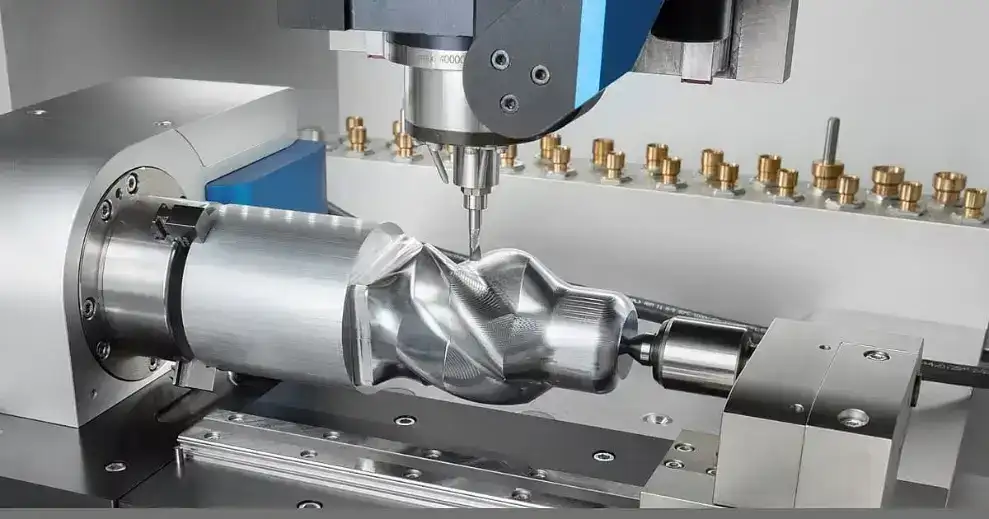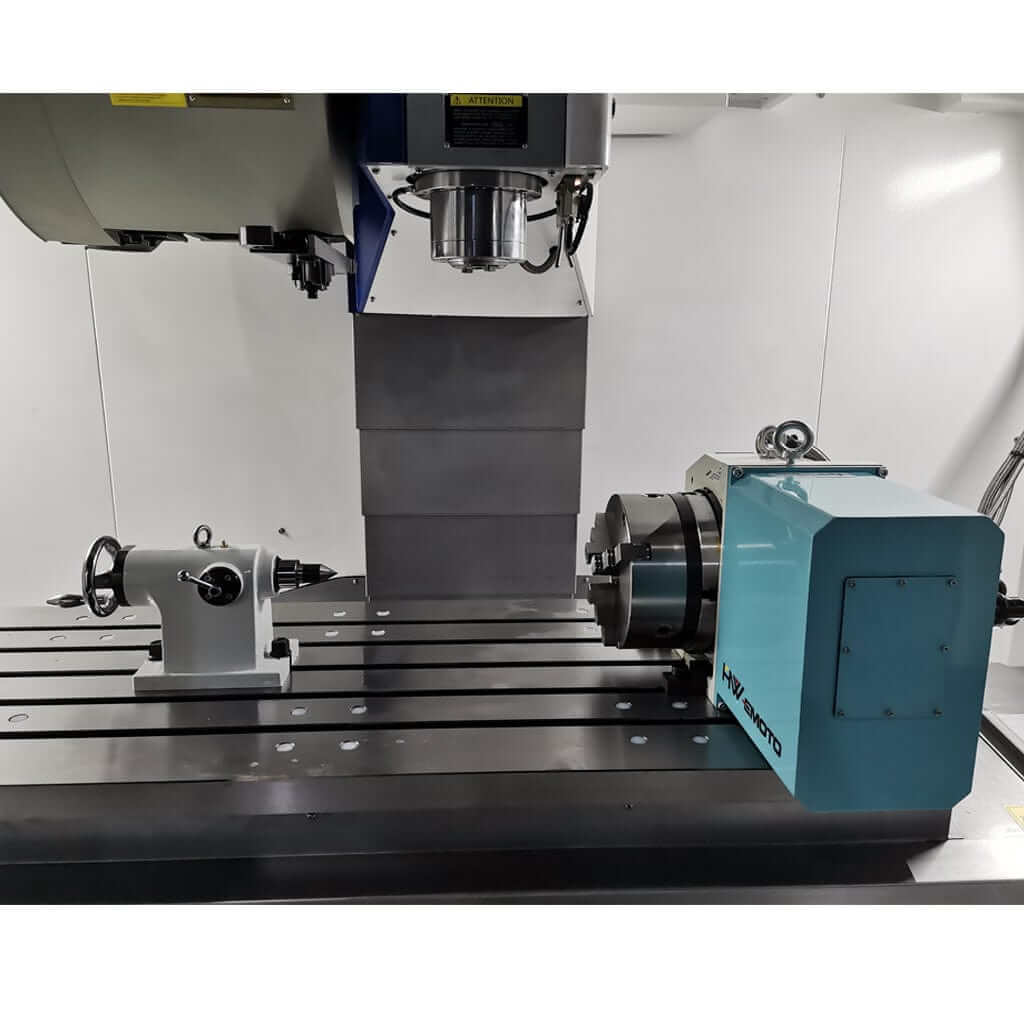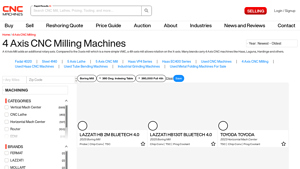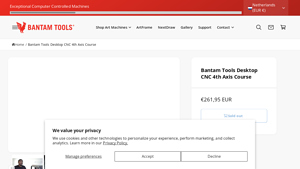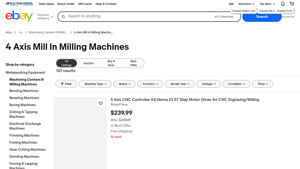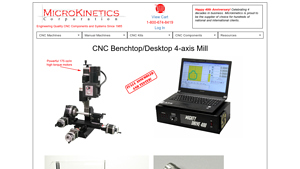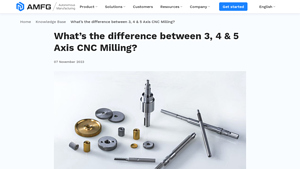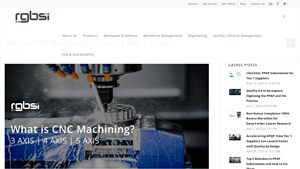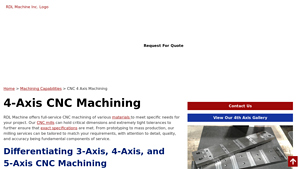4 Axis Cnc Milling Machine Guide: Type, Cost, Top List…
Introduction: Navigating the Global Market for 4 axis cnc milling machine
In today’s competitive manufacturing landscape, sourcing the right 4-axis CNC milling machine can be a daunting task for international B2B buyers, particularly those in emerging markets such as Africa, South America, the Middle East, and Europe. These advanced machines offer enhanced precision and flexibility, enabling manufacturers to produce complex parts with greater efficiency. However, navigating the multitude of options, suppliers, and applications can overwhelm even the most seasoned procurement professionals.
This comprehensive guide aims to demystify the global market for 4-axis CNC milling machines by exploring various types, applications across different industries, and key considerations for supplier vetting. From understanding the intricacies of 4-axis technology compared to its 3-axis and 5-axis counterparts to evaluating cost implications and operational requirements, we provide actionable insights that empower B2B buyers to make informed purchasing decisions.
Our focus on international markets ensures that buyers from regions like Saudi Arabia and Brazil will find relevant information tailored to their unique challenges and opportunities. By equipping you with the knowledge to assess machine capabilities, compatibility with your manufacturing processes, and potential return on investment, this guide serves as an essential resource in your journey toward optimizing your production capabilities.
Understanding 4 axis cnc milling machine Types and Variations
| Type Name | Key Distinguishing Features | Primary B2B Applications | Brief Pros & Cons for Buyers |
|---|---|---|---|
| Vertical 4-Axis Mill | Rotates workpiece around the X-axis, often with a fixed spindle | Aerospace, automotive, medical device | Pros: High precision, versatile for complex parts. Cons: May require more setup time. |
| Horizontal 4-Axis Mill | Utilizes a horizontal spindle, providing better chip removal | Heavy machining, mold & die production | Pros: Efficient for larger workpieces, better rigidity. Cons: More expensive and space-consuming. |
| 4-Axis CNC Router | Combines milling and routing capabilities, often lighter | Woodworking, signage, light metals | Pros: Cost-effective for softer materials. Cons: Limited to less dense materials. |
| 4-Axis Gantry Mill | Uses a gantry design for larger workpieces and high-speed cutting | Large-scale manufacturing, aerospace parts | Pros: Excellent for large parts, high-speed operations. Cons: Requires significant floor space. |
| 4-Axis Multi-Tasking Machine | Integrates milling with turning capabilities | Medical devices, complex assemblies | Pros: Reduces cycle time, increases efficiency. Cons: Higher initial investment. |
What Are the Characteristics of a Vertical 4-Axis Mill?
Vertical 4-axis milling machines are characterized by their ability to rotate the workpiece around the X-axis while the spindle remains fixed. This setup is particularly advantageous for industries like aerospace and automotive, where precision is paramount. When considering a purchase, buyers should evaluate the machine’s rigidity and tooling capabilities, as these factors significantly impact the quality of the finished product.
How Does a Horizontal 4-Axis Mill Differ?
Horizontal 4-axis mills feature a spindle oriented horizontally, which enhances chip removal and allows for more efficient machining of larger workpieces. These machines are well-suited for heavy machining applications, such as mold and die production. Buyers should consider the machine’s footprint and weight capacity, as these are critical for ensuring stability during operation.
What Are the Advantages of a 4-Axis CNC Router?
4-axis CNC routers combine traditional milling with routing capabilities, making them ideal for softer materials like wood and plastics. They are often more cost-effective than traditional milling machines, making them attractive to businesses in the woodworking and signage industries. However, buyers should note that these machines may not be suitable for harder metals or complex geometries.
Why Choose a 4-Axis Gantry Mill?
Gantry mills utilize a unique design that allows for the machining of large parts at high speeds. This design is particularly beneficial in industries that require the fabrication of large aerospace components. When purchasing, businesses should assess the machine’s speed capabilities and the available workspace, as these factors will influence production efficiency.
What Makes a 4-Axis Multi-Tasking Machine Unique?
4-axis multi-tasking machines integrate both milling and turning functionalities, offering versatility for complex assemblies and medical devices. These machines can significantly reduce cycle times, enhancing overall productivity. However, buyers should be prepared for a higher initial investment and ensure that their operational needs justify this cost.
Key Industrial Applications of 4 axis cnc milling machine
| Industry/Sector | Specific Application of 4 Axis CNC Milling Machine | Value/Benefit for the Business | Key Sourcing Considerations for this Application |
|---|---|---|---|
| Aerospace | Machining complex components like turbine blades | High precision and reduced setup times | Need for machines capable of handling tough materials and high tolerances. |
| Medical Devices | Producing intricate surgical instruments | Enhanced accuracy for critical applications | Compliance with stringent regulatory standards and material specifications. |
| Automotive | Fabricating engine components and molds | Improved efficiency and cost savings in production | Requirement for versatile machines to handle various part sizes and complexities. |
| Oil & Gas | Manufacturing parts for drilling and extraction | Reliability and durability in harsh environments | Machines must be robust and capable of machining exotic materials. |
| Electronics | Creating housings and components for devices | Increased production speed and precision | Need for compact machines that fit in smaller manufacturing spaces. |
How is 4 Axis CNC Milling Used in Aerospace Manufacturing?
In the aerospace sector, 4 axis CNC milling machines are essential for machining complex components such as turbine blades and structural parts. The ability to rotate the workpiece allows for intricate geometries to be machined in a single setup, significantly reducing cycle times and improving accuracy. B2B buyers in this sector must prioritize machines with high rigidity and precision to handle the demanding materials typically used in aerospace applications. Additionally, sourcing considerations should include the machine’s capability to maintain tight tolerances over extended periods.
What Role Does 4 Axis CNC Milling Play in Medical Device Production?
4 axis CNC milling is crucial in the medical device industry for producing intricate surgical instruments and implants. The enhanced capabilities of these machines allow manufacturers to create detailed designs while ensuring the highest levels of precision required for medical applications. Buyers from this sector need to focus on sourcing machines that comply with strict regulatory standards and are capable of machining biocompatible materials. The ability to minimize setup times while maximizing accuracy is a significant advantage in this highly competitive market.
Why is 4 Axis CNC Milling Important for Automotive Applications?
In automotive manufacturing, 4 axis CNC milling machines are utilized for fabricating complex engine components and molds. These machines streamline the production process by reducing the number of setups needed, which leads to increased efficiency and cost savings. For international buyers, particularly in regions like South America and the Middle East, it is essential to consider machines that can handle diverse part sizes and complexities, as well as those that offer robust support for high-volume production runs.
How Does 4 Axis CNC Milling Benefit the Oil & Gas Industry?
The oil and gas sector relies on 4 axis CNC milling for manufacturing durable and reliable parts used in drilling and extraction processes. The ability to machine exotic materials and create complex geometries is crucial for ensuring equipment can withstand harsh environmental conditions. Buyers in this industry should seek machines that offer high reliability and performance, with a focus on sourcing options that allow for the machining of tough materials, which are often required for safety-critical applications.
What Advantages Does 4 Axis CNC Milling Offer in Electronics Manufacturing?
In the electronics industry, 4 axis CNC milling machines are employed to create housings and components for various devices. The increased production speed and precision offered by these machines allow manufacturers to meet the fast-paced demands of the market. When sourcing equipment, B2B buyers should consider compact machine designs that fit into smaller manufacturing spaces while still delivering high performance. The versatility of 4 axis milling also enables manufacturers to adapt to evolving product designs efficiently.
3 Common User Pain Points for ‘4 axis cnc milling machine’ & Their Solutions
Scenario 1: Difficulty in Achieving Precision in Complex Parts
The Problem: Many B2B buyers in industries like aerospace, automotive, and medical device manufacturing often face significant challenges when it comes to machining complex parts with high precision. The intricacy of the designs requires not only advanced machinery but also a deep understanding of the capabilities and limitations of the equipment. Inadequate precision can lead to costly rework, wasted materials, and missed deadlines, which ultimately impacts profitability and client satisfaction.
The Solution: To address this issue, buyers should prioritize selecting a 4-axis CNC milling machine that offers advanced features such as high-speed spindles, precision tool holders, and sophisticated control systems. When sourcing equipment, it’s essential to review the machine’s specifications, particularly its repeatability and accuracy ratings. Investing in training for operators is equally important; this ensures they are well-versed in the machine’s capabilities, including how to set up complex parts efficiently. Additionally, implementing a robust quality assurance process, such as in-process inspections, can help catch potential issues early, reducing the risk of costly mistakes.
Scenario 2: Long Setup Times Hindering Production Efficiency
The Problem: A common frustration for B2B buyers is the long setup times associated with 4-axis CNC milling machines, especially when changing from one job to another. This inefficiency not only delays production but can also lead to increased labor costs and reduced machine utilization rates. In competitive markets, these delays can significantly impact a company’s ability to meet customer demands and maintain profitability.
The Solution: To combat long setup times, businesses should consider investing in machines with features designed for quick changeovers, such as automatic tool changers and modular workholding systems. Furthermore, adopting a standardized setup process can streamline operations. Implementing a digital setup guide or checklist can ensure that all necessary tools and components are prepared in advance. Additionally, conducting regular training sessions for staff on efficient setup techniques can enhance productivity and reduce downtime significantly.
Scenario 3: Limited Knowledge of Material Compatibility and Tooling
The Problem: Many international B2B buyers encounter challenges related to material compatibility when using 4-axis CNC milling machines. Different materials, such as aluminum, titanium, or composite materials, require specific tooling and settings to achieve optimal results. Buyers often struggle to find reliable information on the best practices for machining these materials, leading to suboptimal performance and increased wear on tools.
The Solution: To ensure compatibility and optimal machining performance, buyers should engage with suppliers and manufacturers who offer comprehensive support and resources. This includes detailed tooling recommendations, material specifications, and best practices for machining various materials. Establishing a partnership with tooling experts or consultants can provide valuable insights tailored to the specific applications of the buyer’s business. Furthermore, conducting preliminary tests on new materials with a focus on documenting results can lead to better understanding and improved processes over time, ultimately enhancing production quality and efficiency.
Strategic Material Selection Guide for 4 axis cnc milling machine
What Are the Key Materials for 4 Axis CNC Milling Machines?
When selecting materials for 4 axis CNC milling machines, it is crucial to consider the specific properties, advantages, and limitations of each material. This ensures optimal performance and suitability for various applications. Below, we analyze four common materials used in 4 axis CNC milling, focusing on their characteristics and implications for international B2B buyers.
Aluminum: A Lightweight and Versatile Option
Key Properties: Aluminum is known for its excellent strength-to-weight ratio, corrosion resistance, and thermal conductivity. It typically withstands temperatures up to 150°C and is non-magnetic.
Pros & Cons: The lightweight nature of aluminum makes it easy to machine, reducing tool wear and increasing efficiency. However, it can be more expensive than some other materials and may not be suitable for high-stress applications due to lower tensile strength compared to steel.
Impact on Application: Aluminum is ideal for applications requiring lightweight components, such as in the aerospace and automotive industries. Its compatibility with various media makes it a versatile choice.
Considerations for International Buyers: Compliance with ASTM standards is essential, especially for aerospace applications. Buyers from regions like Europe and the Middle East may prefer aluminum alloys that meet specific standards for strength and corrosion resistance.
Steel: The Stalwart of Durability
Key Properties: Steel offers high tensile strength, durability, and resistance to deformation. It can handle high temperatures and pressures, making it suitable for demanding applications.
Pros & Cons: Steel is robust and can be used for a wide range of applications, from automotive to industrial machinery. However, it is heavier, which may lead to increased machining costs and tool wear. Additionally, it can be prone to rust if not properly treated.
Impact on Application: Steel is often used in heavy machinery and structural components where strength is paramount. It is compatible with various media, including oil and gas.
Considerations for International Buyers: Buyers should consider compliance with DIN and JIS standards, particularly in Europe and Asia. The availability of specific grades of steel can vary by region, affecting procurement strategies.
Titanium: The High-Performance Material
Key Properties: Titanium is known for its high strength-to-weight ratio, excellent corrosion resistance, and ability to withstand extreme temperatures (up to 600°C).
Pros & Cons: Titanium is ideal for aerospace and medical applications due to its biocompatibility and strength. However, it is significantly more expensive than aluminum and steel and can be challenging to machine due to its toughness.
Impact on Application: Titanium is often used in high-performance applications, such as aerospace components and medical implants. Its compatibility with aggressive media makes it suitable for specialized environments.
Considerations for International Buyers: Compliance with ASTM and ISO standards is critical for titanium applications, especially in the medical field. Buyers from regions like South America and the Middle East may face challenges in sourcing high-quality titanium due to limited suppliers.
Plastics: The Lightweight Alternative
Key Properties: Engineering plastics, such as PEEK and Nylon, offer good chemical resistance, lightweight properties, and lower thermal conductivity.
Pros & Cons: Plastics are easy to machine and can be cost-effective for low-stress applications. However, they are less durable than metals and may not perform well under high temperatures or mechanical loads.
Impact on Application: Plastics are suitable for applications in electronics, consumer goods, and automotive interiors where weight savings and corrosion resistance are essential.
Considerations for International Buyers: Compliance with ISO standards is important for plastics used in specific industries. Buyers should also consider regional preferences for materials, as some regions may favor certain plastics over others.
Summary Table
| Material | Typical Use Case for 4 axis cnc milling machine | Key Advantage | Key Disadvantage/Limitation | Relative Cost (Low/Med/High) |
|---|---|---|---|---|
| Aluminum | Aerospace components, automotive parts | Lightweight and easy to machine | Lower tensile strength compared to steel | Medium |
| Steel | Heavy machinery, structural components | High durability and strength | Heavier and prone to rust | Medium |
| Titanium | Aerospace and medical implants | Excellent strength-to-weight ratio | High cost and challenging to machine | High |
| Plastics | Electronics, consumer goods | Lightweight and corrosion-resistant | Less durable under high stress | Low |
This guide provides essential insights for B2B buyers looking to select the most suitable materials for their 4 axis CNC milling machine applications. Understanding the properties and implications of each material will facilitate better decision-making aligned with specific industry requirements.
In-depth Look: Manufacturing Processes and Quality Assurance for 4 axis cnc milling machine
What Are the Main Stages of Manufacturing a 4 Axis CNC Milling Machine?
Manufacturing a 4 axis CNC milling machine involves several key stages that ensure precision and quality. Understanding these stages is essential for B2B buyers looking to invest in reliable machinery.
Material Preparation: What Is Involved?
The first step in the manufacturing process is material preparation. High-quality steel or aluminum is typically selected based on the machine’s intended use. This stage includes cutting the raw materials into manageable sizes, followed by surface treatment to enhance durability. Techniques such as annealing may be employed to relieve internal stresses, ensuring the material can withstand the rigors of machining.
Forming: How Is the Structure Created?
The forming stage is crucial as it shapes the components of the CNC machine. Techniques such as CNC machining, laser cutting, and water jet cutting are commonly used. During this phase, parts like the frame, bed, and axes are produced. Precision is vital; thus, advanced CNC machines often oversee these operations to guarantee tight tolerances. The integration of the rotary axis, which allows for the fourth axis of rotation, is also executed during this stage, enhancing the machine’s capabilities.
Assembly: What Are the Key Considerations?
Once individual components are manufactured, the assembly process begins. This phase involves fitting together various parts, including the spindle, motors, and control systems. Each assembly line typically follows a standardized procedure to minimize errors. Technicians will use tools like torque wrenches to ensure that all connections meet specified tolerances.
During assembly, it’s crucial to pay attention to the alignment of the axes, as misalignment can lead to reduced accuracy and increased wear on the machine. This stage may also involve the integration of software systems for machine control, which is critical for ensuring operational efficiency.
Finishing: How Is the Machine Prepared for Use?
The finishing stage encompasses surface treatment and final adjustments. Techniques such as painting, anodizing, or powder coating are employed to protect the machine from corrosion and wear. Additionally, final quality checks are performed to ensure that all components function seamlessly together. Calibration of the machine is also done at this stage to ensure it meets the required specifications before delivery.
What International Standards Govern Quality Assurance in 4 Axis CNC Milling Machines?
Quality assurance (QA) in the manufacturing of 4 axis CNC milling machines is governed by several international standards that ensure consistency and reliability.
How Does ISO 9001 Impact CNC Manufacturing?
ISO 9001 is a globally recognized standard that outlines the requirements for a quality management system (QMS). Manufacturers seeking ISO 9001 certification must demonstrate their ability to provide products that meet customer and regulatory requirements consistently. For B2B buyers, purchasing from ISO-certified suppliers can provide assurance of the manufacturer’s commitment to quality.
What Industry-Specific Certifications Should Be Considered?
In addition to ISO 9001, industry-specific certifications may be relevant depending on the application of the CNC machine. For example, manufacturers producing machines for the medical sector may require ISO 13485 certification, which specifies QMS requirements for medical devices. Similarly, those in the oil and gas industry may look for API certification, ensuring compliance with industry standards for equipment used in hazardous environments.
What Are the Key Quality Control Checkpoints in CNC Milling Machine Manufacturing?
Quality control (QC) is integral to the manufacturing process of 4 axis CNC milling machines. Several checkpoints help ensure that quality standards are met throughout production.
What Are Incoming Quality Control (IQC) Procedures?
Incoming Quality Control (IQC) involves the inspection of raw materials and components before they enter the production line. Suppliers are often required to provide material certifications that verify compliance with specified standards. This initial inspection helps identify any potential issues early in the manufacturing process, reducing the risk of defects.
How Is In-Process Quality Control (IPQC) Implemented?
In-Process Quality Control (IPQC) refers to the checks performed during the manufacturing process. Operators will routinely measure components using calibrated tools to ensure they meet specified dimensions and tolerances. Regular audits and monitoring can catch deviations from quality standards, allowing for immediate corrective actions.
What Final Quality Control (FQC) Steps Are Conducted?
Final Quality Control (FQC) occurs after assembly and finishing. This stage typically includes comprehensive testing of the machine’s functionality, including performance tests, safety checks, and accuracy assessments. Machines may undergo stress testing to simulate operational conditions, ensuring they can perform under expected workloads.
How Can B2B Buyers Verify Supplier Quality Control Practices?
For international B2B buyers, verifying the quality control practices of suppliers is essential to ensure the reliability of their investments.
What Are Effective Audit Practices?
Conducting audits is one of the most effective ways to assess a supplier’s quality control processes. Buyers can request to see the supplier’s QMS documentation, including their quality policies and procedures. On-site visits may also be arranged to observe the manufacturing process firsthand and evaluate the standards being upheld.
How Important Are Quality Reports and Third-Party Inspections?
Requesting quality reports from suppliers can provide insights into their QC performance. Buyers should inquire about the frequency and results of internal audits, as well as corrective actions taken in response to any non-conformities. Additionally, third-party inspections can offer an unbiased assessment of the manufacturer’s processes and products, adding an extra layer of assurance.
What Are the Unique Quality Control Considerations for International Buyers?
When sourcing 4 axis CNC milling machines from international suppliers, several nuances come into play.
How Do Regulatory Standards Vary by Region?
Buyers must be aware of regional regulatory standards that may differ from those in their home countries. For instance, CE marking is essential for machines sold in Europe, indicating compliance with health, safety, and environmental protection standards. Similarly, buyers from regions like the Middle East may need to consider local certifications that are mandatory for machinery.
What Are the Challenges in Communicating Quality Expectations?
Language barriers and cultural differences can pose challenges in communicating quality expectations. Buyers should establish clear specifications and expectations upfront, using detailed documentation and visual aids where necessary. Regular communication throughout the manufacturing process can help mitigate misunderstandings and ensure that quality standards are met.
In conclusion, understanding the manufacturing processes and quality assurance protocols for 4 axis CNC milling machines is crucial for B2B buyers. By focusing on these areas, businesses can make informed decisions, ensuring they acquire machinery that meets their operational needs and quality standards.
Practical Sourcing Guide: A Step-by-Step Checklist for ‘4 axis cnc milling machine’
Introduction
This practical sourcing guide is designed to assist B2B buyers in effectively procuring a 4-axis CNC milling machine. As the demand for precision machining grows, understanding the intricacies of selecting the right equipment is crucial. This checklist will provide actionable steps to ensure a successful purchase that aligns with your operational needs and budget.
Step 1: Define Your Technical Specifications
Before initiating your search, it’s essential to outline your technical requirements. Consider factors such as the complexity of parts you intend to produce, the materials you will work with, and the volume of production.
– Complexity: Identify if you need the machine for intricate designs requiring multiple setups.
– Material Types: Ensure the machine can handle materials like aluminum, steel, or plastics as per your industry standards.
Step 2: Determine Your Budget
Establishing a clear budget is a critical step in the sourcing process. This budget should encompass not only the initial purchase price but also potential costs for installation, training, and maintenance.
– Total Cost of Ownership: Factor in long-term operational costs such as power consumption and tooling.
– Financing Options: Explore leasing versus buying, and understand the implications of each.
Step 3: Evaluate Potential Suppliers
Before committing to a purchase, thoroughly vet potential suppliers. This includes reviewing their company profiles, asking for case studies, and seeking references from previous buyers in your industry.
– Reputation: Look for suppliers with a strong track record and positive customer feedback.
– Support Services: Evaluate the level of after-sales support they offer, including training and technical assistance.
Step 4: Inspect Machine Capabilities and Features
When you narrow down your options, closely examine the capabilities of the machines. Key features to consider include spindle speed, tool change time, and the machine’s ability to handle different types of tooling.
– Spindle Speed: Higher speeds often allow for more efficient cutting, especially in high-speed machining environments.
– Tooling Options: Ensure the machine supports the tools necessary for your applications.
Step 5: Request Demonstrations or Samples
If possible, request a demonstration of the machine in action or ask for sample parts produced by the equipment. This will give you a tangible sense of its performance and capabilities.
– Production Quality: Assess the surface finish and precision of sample parts.
– Operational Ease: Pay attention to the user interface and ease of operation during the demonstration.
Step 6: Verify Supplier Certifications and Compliance
Confirm that the suppliers meet relevant industry standards and certifications. This is crucial for ensuring the quality and safety of the machine.
– ISO Certifications: Look for suppliers that comply with ISO standards for quality management.
– Local Regulations: Ensure the machine complies with any local safety and operational regulations specific to your region.
Step 7: Finalize Your Purchase Agreement
Once you have chosen a supplier and machine, review the purchase agreement carefully. Pay attention to warranty details, delivery timelines, and payment terms.
– Warranty Coverage: Understand what is included in the warranty and for how long.
– Delivery Terms: Confirm the timeline for delivery and installation to avoid unexpected delays in your operations.
By following these steps, you can navigate the complexities of sourcing a 4-axis CNC milling machine more effectively, ensuring that you make an informed and beneficial investment for your business.
Comprehensive Cost and Pricing Analysis for 4 axis cnc milling machine Sourcing
What Are the Key Cost Components of Sourcing a 4 Axis CNC Milling Machine?
When sourcing a 4-axis CNC milling machine, understanding the cost structure is critical for B2B buyers. The primary components influencing the overall cost include:
-
Materials: The choice of materials for the machine’s construction significantly affects pricing. High-quality steel and aluminum are commonly used for their durability and precision, which can drive costs up.
-
Labor: Skilled labor is required for assembly, programming, and maintenance. Labor costs can vary based on geographical location and the availability of skilled technicians.
-
Manufacturing Overhead: This encompasses costs related to utilities, factory space, and equipment depreciation. Overhead can vary significantly depending on the supplier’s operational efficiency.
-
Tooling: The type and quality of tooling required for the milling machine can add to the initial investment. Custom tooling for specific applications may also be necessary.
-
Quality Control (QC): Ensuring that the machine meets industry standards involves additional QC costs. Certifications for precision and safety can also add to the price.
-
Logistics: Transportation costs, especially for international shipping, can vary widely based on distance, weight, and shipping methods. Import duties and taxes should also be considered.
-
Margin: Suppliers typically add a margin to cover their costs and profit. This margin can vary based on the supplier’s market position and negotiation flexibility.
How Do Price Influencers Affect the Cost of 4 Axis CNC Milling Machines?
Several factors can influence the pricing of 4-axis CNC milling machines, particularly in international markets:
-
Volume/MOQ: Ordering in bulk can lead to significant discounts. Suppliers are often willing to negotiate prices for larger orders, which can be beneficial for businesses planning to scale.
-
Specifications and Customization: Customized machines designed for specific applications may incur higher costs. Standard models usually offer better pricing but may not meet all operational needs.
-
Materials and Quality Certifications: Machines made with higher-grade materials or those that comply with strict quality certifications (like ISO or CE) will generally command a higher price. Buyers should evaluate the long-term benefits of investing in certified machinery.
-
Supplier Factors: The reputation and reliability of the supplier can affect pricing. Established suppliers with a strong track record may charge more but offer better support and warranty services.
-
Incoterms: The agreed terms of shipping can significantly impact costs. Understanding Incoterms like FOB (Free On Board) or CIF (Cost, Insurance, and Freight) is crucial for managing total landed costs.
What Are the Best Buyer Tips for Negotiating 4 Axis CNC Milling Machine Prices?
International B2B buyers, especially from regions like Africa, South America, the Middle East, and Europe, should consider the following strategies to ensure cost-effective purchasing:
-
Negotiate Wisely: Leverage your purchasing power by negotiating terms, especially when dealing with large volumes. Be prepared to discuss pricing, payment terms, and warranties.
-
Evaluate Total Cost of Ownership (TCO): Consider not just the initial purchase price but also ongoing costs such as maintenance, tooling, and potential downtime. A cheaper machine may end up being more expensive over time.
-
Understand Pricing Nuances: Be aware of the specific market dynamics in your region. For instance, import duties may vary significantly between countries, affecting the overall cost.
-
Research Multiple Suppliers: Obtaining quotes from various suppliers can provide insights into competitive pricing. It also helps in understanding the market better.
-
Plan for Logistics: Factor in logistics and shipping costs early in the sourcing process. Selecting local suppliers can often mitigate international shipping complexities and costs.
Conclusion
Sourcing a 4-axis CNC milling machine requires careful consideration of various cost components and price influencers. By understanding these factors and employing strategic negotiation techniques, international B2B buyers can optimize their purchasing decisions and ensure they receive the best value for their investment. While indicative prices can provide a rough benchmark, actual costs will vary based on specific requirements and market conditions.
Alternatives Analysis: Comparing 4 axis cnc milling machine With Other Solutions
Understanding Alternatives to 4 Axis CNC Milling Machines
In the realm of precision manufacturing, choosing the right machinery can significantly affect production efficiency and product quality. While 4 axis CNC milling machines offer advanced capabilities for complex part manufacturing, there are alternative solutions that may better fit specific needs or constraints. This analysis explores two viable alternatives—3 axis CNC milling machines and additive manufacturing (3D printing)—and compares them across key performance metrics.
Comparison Table
| Comparison Aspect | 4 Axis CNC Milling Machine | 3 Axis CNC Milling Machine | Additive Manufacturing (3D Printing) |
|---|---|---|---|
| Performance | High precision for complex geometries; capable of multi-sided machining | Suitable for simpler geometries; requires multiple setups for complex parts | Excellent for complex shapes; limited material properties |
| Cost | Higher initial investment; operational costs can vary | Lower upfront cost; generally cheaper to operate | Varies widely depending on materials; can be cost-effective for low-volume runs |
| Ease of Implementation | Requires skilled operators; setup can be complex | Easier to operate; faster setup for simpler parts | User-friendly; minimal setup, but requires design software |
| Maintenance | Regular maintenance required; can be costly | Generally lower maintenance; less complex machinery | Minimal maintenance; dependent on the printer type |
| Best Use Case | Ideal for high-volume production of intricate parts; industries like aerospace and automotive | Best for simpler, flat parts or low-volume production | Perfect for rapid prototyping and custom parts; industries like medical and consumer products |
Detailed Breakdown of Alternatives
3 Axis CNC Milling Machines
3 axis CNC milling machines operate with three linear movements—X, Y, and Z axes—making them well-suited for simpler machining tasks. They are generally more affordable than their 4 axis counterparts, both in terms of initial investment and operational costs. However, their limitation lies in their inability to machine complex geometries in a single setup, often requiring multiple setups, which can lead to increased time and potential errors. They excel in producing flat parts, enclosures, and basic components, making them ideal for industries that do not require high complexity.
Additive Manufacturing (3D Printing)
Additive manufacturing, commonly known as 3D printing, has revolutionized the production of complex geometries. Unlike traditional machining methods, it builds parts layer by layer, allowing for intricate designs that would be difficult or impossible to achieve with milling. The initial setup is generally more user-friendly, and for low-volume production runs, it can be cost-effective. However, 3D printing is limited by the types of materials available and often cannot match the mechanical properties required for high-stress applications. This method is particularly beneficial in industries like medical device manufacturing, where custom, patient-specific solutions are required.
Conclusion: Choosing the Right Solution for Your Needs
Selecting the right machining solution hinges on various factors including production volume, part complexity, and budget constraints. B2B buyers should assess their specific requirements before making a decision. For high-volume production of intricate components, a 4 axis CNC milling machine may be the best choice. Conversely, for simpler parts or rapid prototyping needs, 3 axis CNC milling machines or additive manufacturing could provide more cost-effective and efficient alternatives. Ultimately, understanding the strengths and weaknesses of each option will enable businesses to make informed choices that align with their operational goals and market demands.
Essential Technical Properties and Trade Terminology for 4 axis cnc milling machine
What Are the Key Technical Properties of a 4 Axis CNC Milling Machine?
When considering the acquisition of a 4 axis CNC milling machine, it’s essential to understand its technical specifications and how they impact production efficiency and part quality. Here are some critical properties to evaluate:
1. Material Compatibility
4 axis CNC milling machines can process a variety of materials, including metals like aluminum, steel, and titanium, as well as plastics and composites. The choice of material affects tool selection, cutting speeds, and the overall machining process. B2B buyers should consider their specific material needs to ensure the machine can handle their production requirements.
2. Tolerance Levels
Tolerance refers to the permissible limit of variation in a physical dimension. In CNC milling, tight tolerances are critical for ensuring parts fit together correctly and function as intended. Common tolerances range from ±0.005 inches for general machining to ±0.0001 inches for high-precision applications. Understanding tolerance requirements helps businesses select machines that meet their quality standards and industry regulations.
3. Spindle Speed
Spindle speed, measured in revolutions per minute (RPM), indicates how fast the cutting tool can rotate. Higher spindle speeds enable faster machining and improved surface finishes, particularly on harder materials. For B2B buyers, selecting a machine with adjustable spindle speeds can enhance versatility and efficiency in production.
4. Tool Capacity
The tool capacity of a 4 axis CNC milling machine refers to the number of tools it can hold at once. Machines with higher tool capacity reduce downtime associated with tool changes, allowing for smoother and faster production runs. This is particularly important for companies that manufacture complex parts requiring multiple tools.
5. Workpiece Size and Weight
Understanding the maximum size and weight a machine can accommodate is crucial for B2B buyers. A machine that cannot handle the dimensions of the intended workpieces may result in additional costs and delays. Evaluating the physical specifications ensures that the chosen machine aligns with production needs.
6. Control System
The control system of a CNC machine dictates its ease of use and programming capabilities. Modern systems often feature user-friendly interfaces and advanced software that streamline the programming process. A robust control system can significantly reduce training time and enhance operational efficiency.
What Are Common Trade Terms Related to 4 Axis CNC Milling Machines?
Familiarity with industry terminology is vital for effective communication and negotiation in the B2B landscape. Here are some essential terms:
1. OEM (Original Equipment Manufacturer)
An OEM is a company that produces parts and equipment that may be marketed by another manufacturer. Understanding OEM relationships is important for buyers looking for high-quality components and machines, ensuring they source from reputable manufacturers.
2. MOQ (Minimum Order Quantity)
MOQ refers to the smallest quantity of a product that a supplier is willing to sell. This term is crucial for B2B buyers to consider, as it impacts inventory management and cash flow. Knowing the MOQ helps businesses plan their purchasing strategies effectively.
3. RFQ (Request for Quotation)
An RFQ is a document used to solicit price quotes from suppliers for specific goods or services. It’s an essential step in the procurement process, allowing buyers to compare pricing and terms from multiple vendors, thereby ensuring they make informed purchasing decisions.
4. Incoterms (International Commercial Terms)
Incoterms are a series of pre-defined commercial terms published by the International Chamber of Commerce (ICC) relating to international commercial law. They clarify the responsibilities of buyers and sellers regarding shipping, insurance, and tariffs. B2B buyers should be familiar with Incoterms to understand their obligations in international transactions.
5. Lead Time
Lead time is the amount of time it takes from placing an order to receiving the product. For businesses, understanding lead times is crucial for planning production schedules and maintaining inventory levels, particularly in industries where time-to-market is a competitive advantage.
6. Calibration
Calibration is the process of adjusting the precision of a machine’s measurements. For CNC milling machines, proper calibration ensures that the machine operates within specified tolerances, leading to higher accuracy and quality in the finished parts. Regular calibration is essential for maintaining optimal machine performance.
Understanding these technical properties and trade terms will empower B2B buyers to make informed decisions when investing in 4 axis CNC milling machines, ultimately leading to improved operational efficiency and profitability.
Navigating Market Dynamics and Sourcing Trends in the 4 axis cnc milling machine Sector
What Are the Key Trends Shaping the 4 Axis CNC Milling Machine Market?
The global market for 4-axis CNC milling machines is witnessing significant growth, driven by advancements in technology and increasing demand across various sectors, including automotive, aerospace, and medical manufacturing. As international B2B buyers from regions like Africa, South America, the Middle East, and Europe explore sourcing options, they will encounter several key trends. The integration of Industry 4.0 technologies, such as IoT and AI, enhances machine capabilities, allowing for real-time monitoring, predictive maintenance, and improved operational efficiency. This digital transformation not only increases productivity but also reduces downtime, which is crucial for competitive pricing.
Moreover, there is a rising preference for used and refurbished 4-axis CNC machines, particularly in emerging markets. This trend is largely influenced by budget constraints and the desire for cost-effective solutions without compromising on quality. B2B buyers should also consider the growing emphasis on versatility and multi-functionality in milling machines, as manufacturers seek to maximize the utility of their equipment. The need for customization is paramount; thus, suppliers that offer tailored solutions will have a competitive edge.
How Can B2B Buyers Address Sustainability and Ethical Sourcing in the 4 Axis CNC Milling Machine Sector?
Sustainability is becoming increasingly critical for B2B buyers in the manufacturing sector. The environmental impact of CNC machining processes and the materials used in production are under scrutiny. For those sourcing 4-axis CNC milling machines, understanding the carbon footprint associated with manufacturing and operating these machines is essential. Buyers should prioritize suppliers that demonstrate a commitment to reducing emissions, utilizing energy-efficient technologies, and implementing waste reduction strategies.
Ethical sourcing is equally important. B2B buyers should ensure that their suppliers adhere to fair labor practices and ethical standards throughout the supply chain. Certification programs, such as ISO 14001 for environmental management and ISO 45001 for occupational health and safety, can serve as benchmarks for evaluating suppliers’ commitment to sustainability. Additionally, the use of ‘green’ materials, such as recycled metals and environmentally friendly lubricants, can significantly reduce the ecological footprint of CNC milling operations. By choosing suppliers that align with these values, buyers can enhance their brand reputation and meet the growing consumer demand for sustainable practices.
What Is the Historical Context of 4 Axis CNC Milling Machines in B2B Manufacturing?
The evolution of CNC milling technology has been pivotal in shaping modern manufacturing processes. The introduction of 4-axis CNC milling machines marked a significant advancement from traditional 3-axis systems, enabling manufacturers to machine complex geometries with higher precision and efficiency. The first 3-axis CNC mills emerged in the 1950s, primarily used for simpler machining tasks. As industries demanded more sophisticated components, the need for additional axes led to the development of 4-axis machines in the 1980s. This innovation allowed for rotary motion around the X-axis, facilitating the production of intricate designs in a single setup, thereby reducing labor costs and improving turnaround times.
In recent years, the demand for 4-axis CNC milling machines has surged as manufacturers seek to enhance productivity and meet the challenges of global competition. The integration of advanced technologies, such as automation and smart manufacturing solutions, continues to drive the evolution of these machines, ensuring they remain a vital component in the B2B landscape. As buyers consider the historical context, they can better appreciate the technological advancements and market trends that influence their sourcing decisions today.
Frequently Asked Questions (FAQs) for B2B Buyers of 4 axis cnc milling machine
-
How do I choose the right 4-axis CNC milling machine for my business needs?
Selecting the appropriate 4-axis CNC milling machine involves assessing factors such as part complexity, production volume, and industry requirements. If you need to produce intricate components, prioritize machines with multiple tool pockets. For high-volume production, consider automation features that enhance efficiency. Additionally, evaluate the machine’s capability to handle materials specific to your industry, such as aerospace or medical devices, which often require high precision and durability. -
What are the key benefits of using a 4-axis CNC milling machine over a 3-axis machine?
The primary advantage of a 4-axis CNC milling machine is its ability to create more complex geometries in a single setup. The added rotary axis allows for milling on multiple sides of a workpiece without repositioning, reducing setup time and potential errors. This efficiency is particularly beneficial for industries requiring high precision, such as aerospace and automotive, where intricate designs and tight tolerances are essential. -
What should I consider when sourcing 4-axis CNC milling machines internationally?
When sourcing machines internationally, it’s crucial to consider supplier reliability, machine specifications, and compliance with local regulations. Verify supplier credentials through reviews and certifications. Additionally, assess the machine’s compatibility with your existing operations and ensure it meets your production needs. Understanding trade regulations, tariffs, and shipping logistics is also essential to avoid unexpected costs and delays. -
What customization options are typically available for 4-axis CNC milling machines?
Many manufacturers offer customization options for 4-axis CNC milling machines, including spindle speed, tool changers, and specific software controls. Buyers can also request modifications tailored to their production processes, such as enhanced cooling systems or specialized fixtures. It’s important to communicate your exact requirements to the supplier to ensure the machine is equipped to meet your operational needs. -
What are the typical minimum order quantities (MOQ) for purchasing 4-axis CNC milling machines?
Minimum order quantities for CNC milling machines can vary significantly based on the manufacturer and the type of machine. Generally, MOQs for new machines are often one unit, but bulk purchases may lead to better pricing. For used machines, MOQs can be more flexible. Always confirm with the supplier regarding any MOQ policies and potential discounts for larger orders. -
What payment terms should I negotiate when buying a 4-axis CNC milling machine?
Payment terms can vary, but typical arrangements include a deposit upon order confirmation and the balance due before shipping. Depending on the supplier, you may also negotiate favorable terms such as extended payment plans or financing options. It’s essential to clarify all terms in writing and ensure they align with your cash flow capabilities to avoid financial strain. -
How can I ensure quality assurance for the 4-axis CNC milling machines I purchase?
To ensure quality assurance, request detailed documentation from the supplier, including machine specifications, maintenance records, and certification of compliance with industry standards. If possible, arrange for an inspection before finalizing the purchase. Additionally, inquire about warranty terms and after-sales support, which can provide peace of mind regarding the machine’s reliability and performance. -
What logistics considerations should I keep in mind when importing 4-axis CNC milling machines?
When importing CNC milling machines, consider shipping methods, customs regulations, and potential duties or tariffs. Choose a reliable freight forwarder experienced in handling machinery to ensure safe and timely delivery. Also, account for the costs of insurance and handling fees, as well as any necessary modifications to your facility to accommodate the machine’s size and operational requirements. Proper planning will help minimize delays and additional expenses.
Important Disclaimer & Terms of Use
⚠️ Important Disclaimer
The information provided in this guide, including content regarding manufacturers, technical specifications, and market analysis, is for informational and educational purposes only. It does not constitute professional procurement advice, financial advice, or legal advice.
While we have made every effort to ensure the accuracy and timeliness of the information, we are not responsible for any errors, omissions, or outdated information. Market conditions, company details, and technical standards are subject to change.
B2B buyers must conduct their own independent and thorough due diligence before making any purchasing decisions. This includes contacting suppliers directly, verifying certifications, requesting samples, and seeking professional consultation. The risk of relying on any information in this guide is borne solely by the reader.
Top 7 4 Axis Cnc Milling Machine Manufacturers & Suppliers List
1. Haas – VF4 Series
Domain: cncmachines.com
Registered: 1997 (28 years)
Introduction: Used 4 Axis CNC Milling Machines available for sale. Key brands include Haas, Laguna, Hardinge, and others. Various models listed such as Fadal 4020, Haas VF4 Series, and Haas EC400 Series. Categories include Vertical Mach Center, CNC Lathe, Horizontal Mach Center, Router, EDM, and more. Options available include Probe, Chip Conveyor, Coolant Thru Spindle, Programmable Coolant, 360 Deg. Indexing T…
2. Bantam Tools – 4th Axis CNC Course
Domain: bantamtools.com
Registered: 2013 (12 years)
Introduction: This company, Bantam Tools – 4th Axis CNC Course, is a notable entity in the market. For specific product details, it is recommended to visit their website directly.
3. CNC Router – 6040 1.5KW 3/4 Axis Engraver
Domain: ebay.com
Registered: 1995 (30 years)
Introduction: This company, CNC Router – 6040 1.5KW 3/4 Axis Engraver, is a notable entity in the market. For specific product details, it is recommended to visit their website directly.
4. MicroKinetics – 4-Axis CNC Machining Center
Domain: microkinetics.com
Registered: 1997 (28 years)
Introduction: 4-axis CNC Machining Center from MicroKinetics includes:
– High performance with constant current chopping drives and advanced motion controller.
– Designed for jewelry, rings, and custom gears production.
– Accepts standard tools and accessories, reducing costs.
– Quality assurance with stringent testing procedures.
– Five-year warranty on electronics and one-year warranty on mechanics.
Sp…
5. AMFG – Advanced CNC Milling Solutions
Domain: amfg.ai
Registered: 2018 (7 years)
Introduction: 3-axis CNC milling: Fixed workpiece, spindle moves along X, Y, Z axes; ideal for simple designs, shallow features, and planar profiles. 4-axis CNC milling: Adds A-axis for rotation around X-axis; enhances precision and speed for parts feasible on 3-axis machines. 5-axis CNC milling: Utilizes two rotation axes (A, B, C); processes multiple sides without repositioning workpiece; suitable for complex…
6. RGBSI – CNC Machining Solutions
Domain: blog.rgbsi.com
Registered: 1997 (28 years)
Introduction: CNC (computer numerical control) machining is a manufacturing process where programmed computer software directs the motions of machinery and tools. It automates techniques such as milling, water jet cutting, and laser cutting. CNC machines operate along multiple axes: 3 Axis (X, Y, Z), 4 Axis (X, Y, Z, A), and 5 Axis (X, Y, Z, and two of A, B, C). 3 Axis machining is suitable for basic parts, 4 A…
7. RDL Machine – 4-Axis CNC Machining
Domain: rdlmachine.net
Registered: 2009 (16 years)
Introduction: 4-Axis CNC Machining offered by RDL Machine includes full-service CNC machining of various materials, capable of holding critical dimensions and extremely tight tolerances. The service is suitable for both prototyping and mass production, emphasizing detail, quality, and accuracy. 4-axis machining adds a fourth axis (A-axis) for enhanced design capacity, allowing for the creation of complex models…
Strategic Sourcing Conclusion and Outlook for 4 axis cnc milling machine
How Can Strategic Sourcing Enhance Your Procurement of 4 Axis CNC Milling Machines?
In conclusion, strategic sourcing is paramount for international B2B buyers seeking to invest in 4 axis CNC milling machines. By understanding the unique capabilities of these machines—such as their ability to handle complex geometries and improve production efficiency—buyers can make informed decisions that align with their operational needs.
Identifying reputable suppliers and manufacturers, particularly those with a strong presence in Africa, South America, the Middle East, and Europe, can lead to better pricing, enhanced machine reliability, and superior after-sales support. Leveraging local insights and market dynamics can also yield advantages in terms of logistics and compliance.
As the demand for precision engineering continues to grow across various sectors, including automotive and aerospace, the importance of investing in advanced machining technology cannot be overstated. We encourage you to explore your options, engage with suppliers, and evaluate how a 4 axis CNC milling machine can elevate your manufacturing capabilities. The future of your operations is at your fingertips—make the strategic choice today for long-term success.
